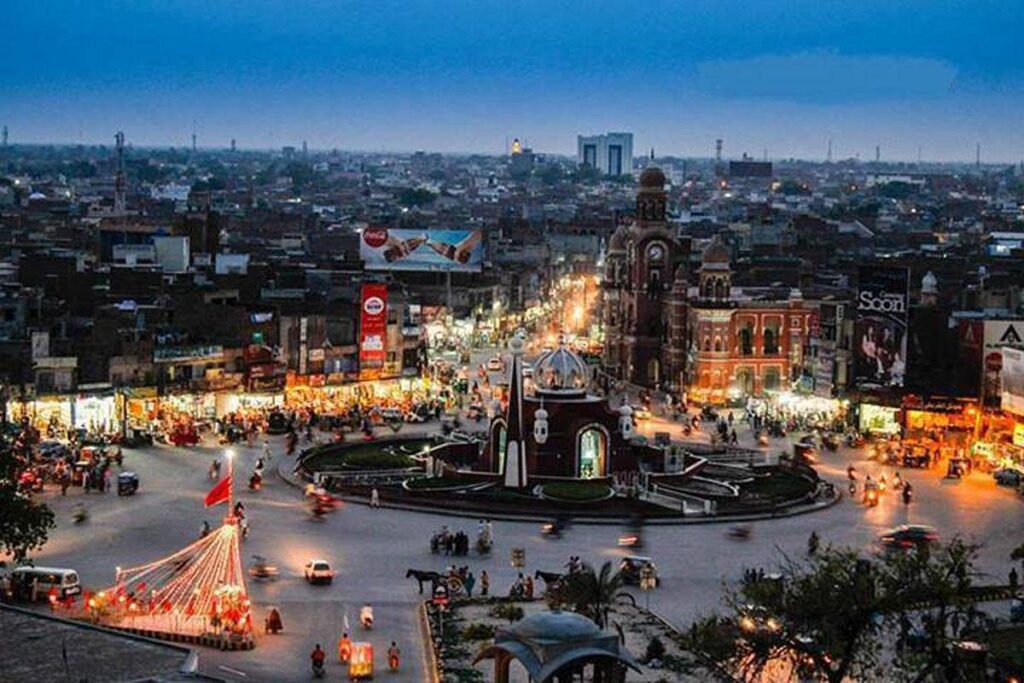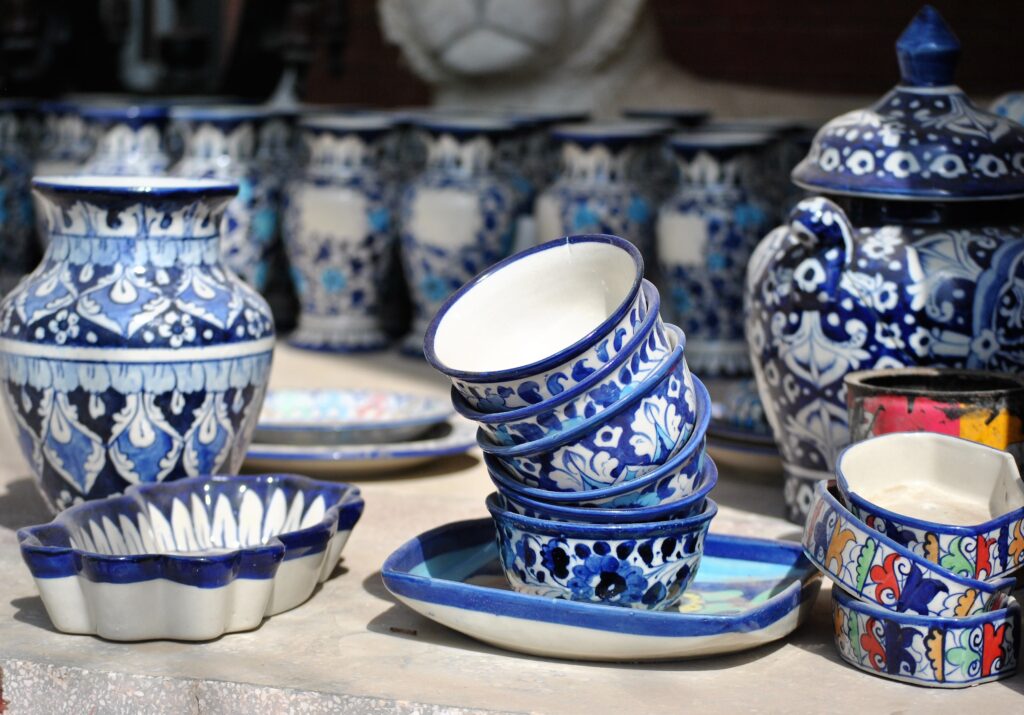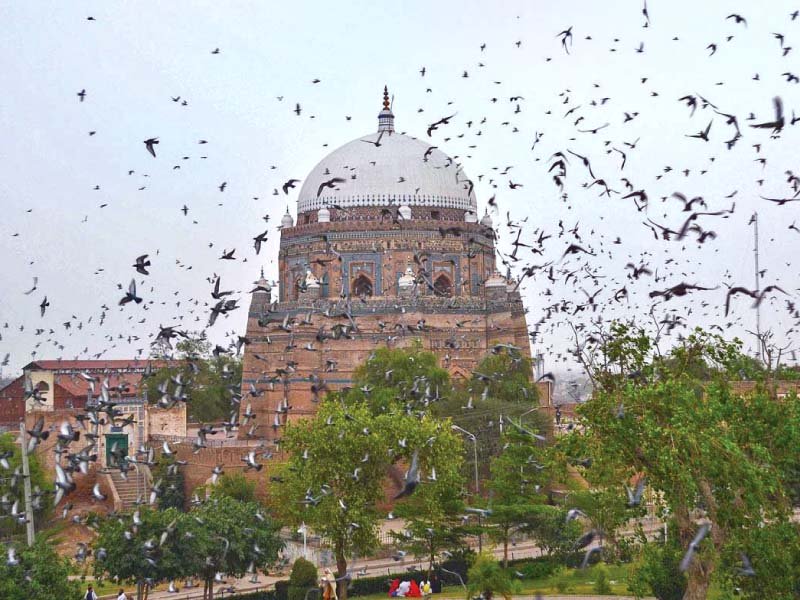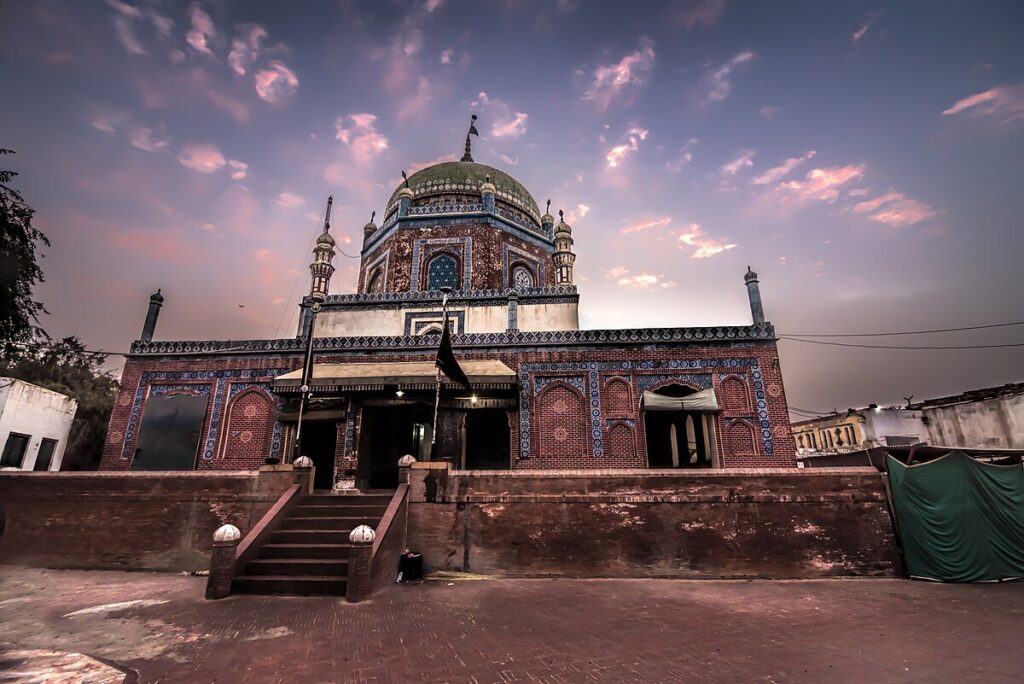Quick Facts & Key Metrics
- Province: Punjab, Pakistan
- Population (2023 est.): ≈ 2 million (urban)
- Languages: Saraiki (native), Punjabi, Urdu widely spoken; English in formal settings
- Elevation: ~122 m above sea level
- Nearest airport: Multan International Airport (MUX), ~20 minutes from city center
- Distance from Islamabad: ~580 km / ~6.5–7.5 hr by road
- Best time to visit: November to February (cooler, pleasant climate)
- Known for: Sufi shrines, blue pottery, mangoes, forts, ancient Hindu and Islamic heritage
Historical Background
Multan’s story spans millennia. Once a key outpost of the Indus Valley Civilization, it later became the stronghold of Hindu sun worship (the legendary Sun Temple once stood here), before evolving into a major center of Islamic learning and Sufism. From Alexander the Great to the Mughals, Sikhs, and the British, Multan was ruled by empires that left their architectural and cultural imprints. The city’s defining chapter, however, came with the arrival of Sufi saints like Hazrat Bahauddin Zakariya, Shah Rukn-e-Alam, and Shah Shams Tabrez, whose shrines today draw pilgrims from across South Asia.
Geography & Key Districts
Multan is located on the eastern bank of the Chenab River and serves as the main urban hub of Southern Punjab.
Old City (Androon Sheher)
• Walled city with narrow lanes, centuries-old Havelis, Ghanta Ghar, and traditional bazaars.
• Core area for Multani crafts like Ajrak printing, camel skin lamps, and blue pottery.
Fort Kohna Qasim Bagh
• Elevated mound overlooking the city; once a citadel of power, now home to the city’s most iconic shrines.
• Includes Tomb of Shah Rukn-e-Alam, Bahauddin Zakariya, and Qasim Bagh Stadium.
New Multan & Bosan Road
• More modern neighborhoods, commercial centers, and academic institutions.
• Leads toward mango farms and suburbs near Bahauddin Zakariya University.





Places to Visit & Local Experiences
| Area | Access | Highlights | Vibe |
|---|---|---|---|
| Shah Rukn-e-Alam Shrine | Fort Qasim area | Massive octagonal tomb with stunning brickwork and blue tile | Spiritual & majestic |
| Ghanta Ghar Market | Old City | Clock tower, bustling bazaars selling handicrafts, embroidered khussas | Lively & colorful |
| Sun Temple Ruins (Harappa link) | Historical reference only (destroyed centuries ago) | Ancient spiritual significance; Multan once known as the “City of the Sun” | Mythic past |
| Multan Museum | Near Fort | Archaeological artifacts, calligraphy, coins, Islamic manuscripts | Educational |
| Multan Blue Pottery | Multiple locations | Watch artisans handcraft pottery skills | Artistic & local |
Culture & People
Multan is the cultural capital of South Punjab. Its residents are known for their hospitality, poetic expressions, and religious tolerance—shaped by centuries of Sufi influence. Saraiki language and folk music dominate the cultural landscape. Spiritual festivals or “Urs” at Sufi shrines are held annually, with Qawwali, devotional chants, and food stalls attracting thousands of visitors. Crafts like tile work, block printing, and embroidery are generational trades that continue to thrive in small family workshops.
Budget Snapshot (2025)
| Style | Daily USD | Inclusions |
|---|---|---|
| Backpacker | $30 – $50 | Guesthouse near Old City, rickshaws, street food |
| Comfort | $100 – $200 | Mid-range hotel, guided shrine visits, handicraft shopping |
| Luxury | $200 – $350+ | Boutique hotel or farmhouse stay, full-day city tour, cultural guide |
Final Word
Multan is a living museum of Sufi spirituality, ancient resilience, and artisanal brilliance. It may not boast the fast pace of bigger cities, but it offers something deeper: a sense of timelessness. Whether you’re walking barefoot inside a tiled shrine, watching sunset over the Chenab, or sipping sugarcane juice in a centuries-old market, Multan slows you down—in the best way. It’s a city of heat, dust, devotion, and beauty that seeps into your bones.
Discovering Pakistan
Travel back in time with Discovering Pakistan as we take you on a private tour through the mystic streets and sacred spaces of Multan. From shrine hopping and bazaar walks to workshops with local artisans, our curated experiences help you explore the spiritual and cultural depth of this historic city—far beyond the guidebooks.
Multan Tour Packages
Starting in Karachi, this 11-day road trip covers historical and cultural sites along the Indus Valley route. You visit Hyderabad, Sukkur, Manchar Lake, Mohenjo-Daro, Bahawalpur, Multan, Lahore, Rohtas Fort, and end the tour in Islamabad, with a visit to Taxila.

